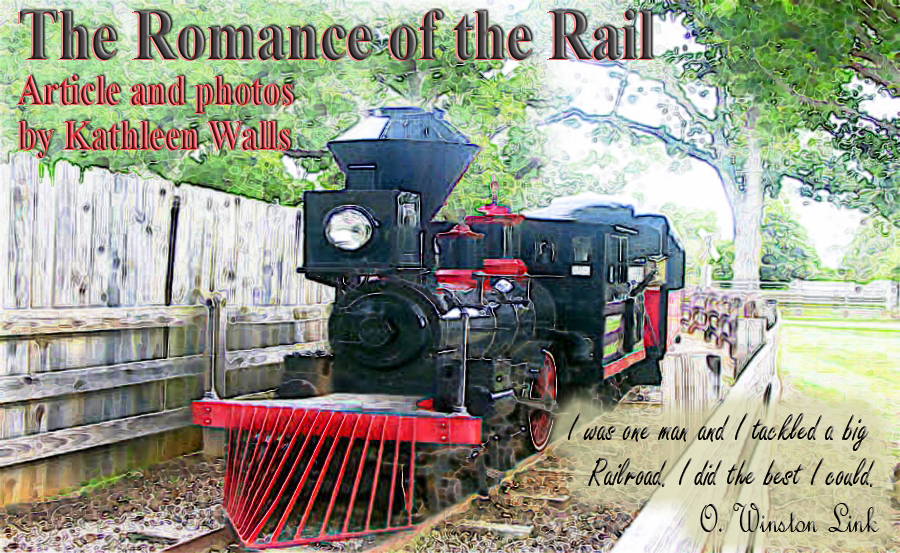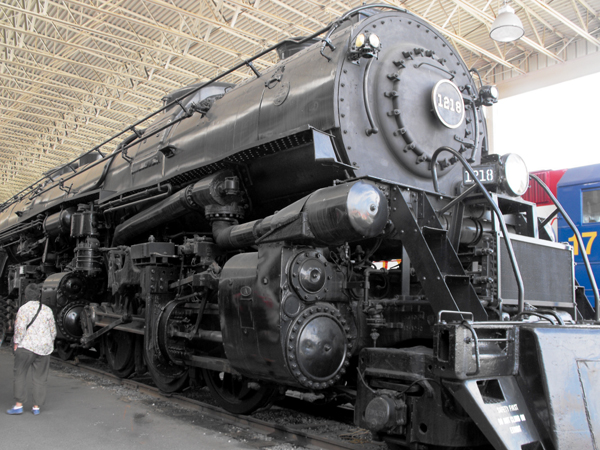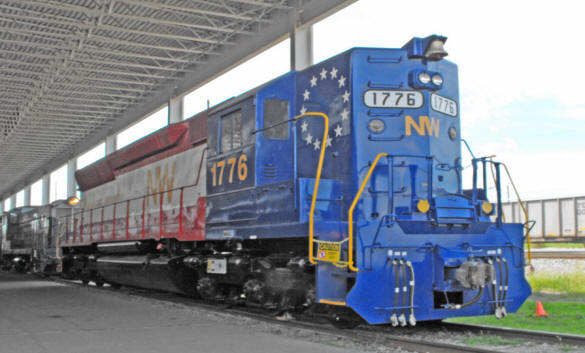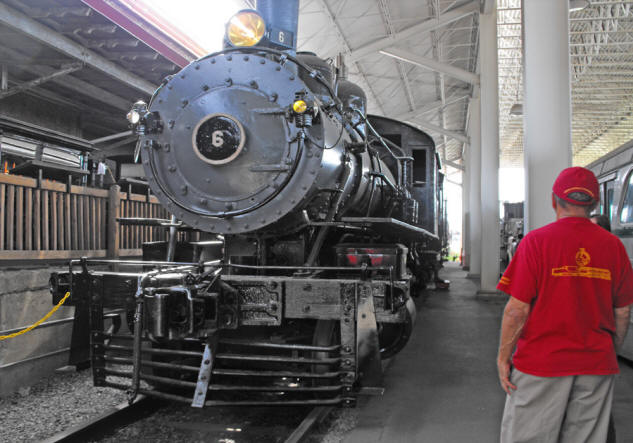|

 |
| O. Winston Link |
For over a century America has carried on a
love affair with the steam locomotive. It still represents the
romance of the train. Watch one of the epic old movies and you
will be awed by the power of the old steam engine pulling into
the station puffing a cloud of smoke above it.
One railroad
stood out above all others for the popularity of the steam
locomotive in our culture, Norfolk & Western, headquartered in
Roanoke Virginia for most of its existence, ruled the southern
railways from 1838 and 1982. During the Civil War, it was the
Confederacy's major railway.
Norfolk & Western manufactured its own steam locomotives
mainly the Roanoke Shops. They were the last railroad company to
convert their service from steam to diesel.
 |
| O. Winston Link Museum |
Roanoke was one of the biggest railroad
hubs at the time. So to track down the romance of the rail a
trip to Roanoke, Virginia was in order. One of the best places
to learn railroad lore is at the O. Winston Link Museums in
Roanoke. O. Winston Link was a commercial photographer and a
railfan. He is credited with chronicling the end of the steam
era in railroad travel.
For about five years in the early 1950s,
Link dedicated his life to photographing the Norfolk & Western
Railroad. Since he could not control the happenings going on
around the tracks and the sun's position in daytime, he took
most of his photographs at night. With his background in Civil
engineering and photography he was meticulous about
photographing the mechanical details and with using local people
as models. Shannon Lugar was our guide there. She explained how
Link would form a connection with the people whom he used in his
photographs. Link was in a tiny Virginia town called Vesuvius
and stopped at a gas station. There he met a young couple both
16 years old on their first date. He paid them a quarter apiece
to sit in his convertible in a drive in movie and pose for a
shot of a steam engine in the background.
 |
|
Sometimes the Electricity
Fails |
The photograph
called, Hotshot Eastbound,
became one of his most famous works. It symbolizes the changing
of an era, the drive in with its fifties vintage cars, the train
exiting the picture and on the screen, the newest form of
popular transportation, an airplane.
He used the same couple in
another famous photo called
Sometimes the Electricity
Fails. In this
photo, the kids are seated in the same car, Link's 1952 Buick
convertible, while a attendant pumps gas from an old type
gravity pump while Locomotive #131, a K2a Mountain, 4-8-2, sits
in the background. Shannon led us to the actual pump used in the
photo sitting right there in the museum. The artifacts at this
museum are so unique. She also told us the rest of the story.
"Against all odds that young couple later married and now they
bring their kids and grandkids to the museum."
 |
| Shannon shows us the gas pump |
By 1960, the year Norfolk & Western
completed the transition to diesel, Link had accumulated 2400
negatives. He did it all using his own money. No one was buying
rail pictures that. He also made sound recordings of the trains
which sold somewhat more. They helped him finance the
photography.. Link claimed his love for trains stemmed from
their similarity to people. "The train is as close to a human
being as you can get. It talks, it moves, it grunts and groans.
And each engine has its own characteristics–its own sound and
smell and sights."
From the Link Museum, you can take a walk
along the Railwalk, an outdoor museum with
interactive signage, displays and whistles, telling the history
of the railroad in Roanoke up to the present day.
And is a short half mile to the Virginia Museum of
Transportation, located in Roanoke's historic Norfolk & Western
Railway Freight Station. I was awed by the size and scope of the
collection. Along with the rail artifacts, including over 50
locomotives and other rail cars, the museum contains samples of
most other types of transportation.
 |
| Norfolk & Western's 1218 |
That's where I found the great old engine
one pictured in the header.
It's Norfolk & Western's 1218, a steam locomotive that at
one time was the strongest-pulling operational steam locomotive
in the world built here at the Roanoke shops. It is a
four-cylinder simple articulated locomotive with a 2-6-6-4,
known as the Whyte system wheel arrangement.
Another treasure in the transportation
Museum is Engine #6. There were only of this one 14 built. It is
the oldest steam locomotive in the collection, built January
1897 for the Norfolk &Western Railway. It literally was "the
little engine that could." In its heyday, it could pull up to 50
wooden rail cars at a speed of 35 mph. It was retired in January
1955.
 |
| Locomotive number 1776 |
The railroad has always represented the
best in American innovation so it is not surprising that there
was something special done to represent the Bicentennial of
American Independence. Thomas C. Heinrich, who was a trainee and
later became assistant roadmaster at Mullens, WV, suggested that
since locomotive number 1776 was ready for an overhaul in 1973,
suggesting it be painted to celebrate the bicentennial.
The following year,
#1976 sported its bright new color scheme. Thick red and white
stripes ran the length of the locomotive and its cab was painted
a striking blue color with a circle of 13 white stars on the
front sides. From 1974 through 1978, the engine bore witness to
Norfolk and Western's patriotism across the 14 states serviced
by the system.
 |
| Engine Number 6 |
At its makeover in 1978, the engine was
again painted N&W black and continued in service until Leap Day
in February, 1988. When the locomotive was donated to the
Virginia Museum of Transportation in 1991 it was once again
painted in its patriotic scheme but the paint job did not last.
In 2011, fundraising was begun for another restoration of the
1776. That year, the
engine was a People's Award Choice Winner in the Virginia
Association of Museums' Top Ten Endangered Artifacts
competition. Trains Magazine deemed the 1776 the winner of the
annual Preservation Award over other 120 entries. The
restoration was completed in 2012 and the 1776 now awaits your
visit to Roanoke.
Roanoke is Railfan Heaven so don't delay.
Go now!
For more info:
http://www.linkmuseum.org/
http://www.vmt.org
|
![]() Ads fund American Roads so please consider them for your needed
purchases.
If you enjoy the articles we offer, donations
are always welcome.
Ads fund American Roads so please consider them for your needed
purchases.
If you enjoy the articles we offer, donations
are always welcome.
|